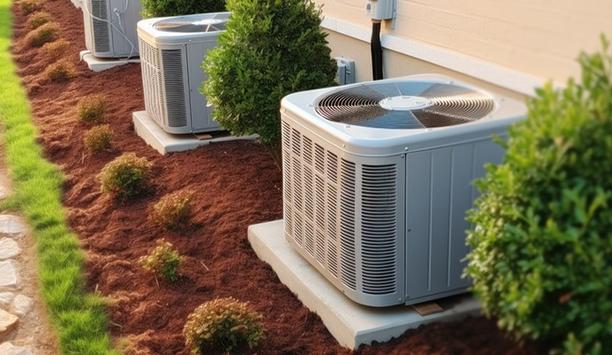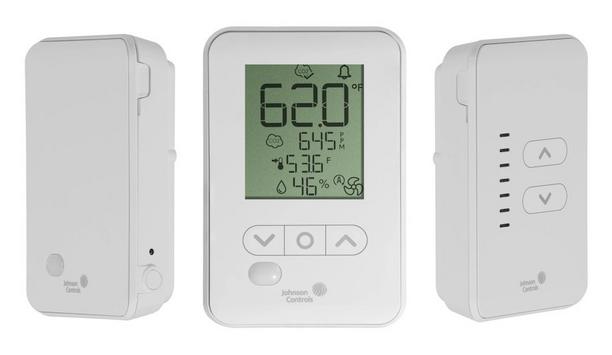The Wyss Institute at Harvard University has developed an evaporative cooling system that uses a specially coated ceramic to cool air without adding humidity. Researchers say the approach can yield more affordable and environmentally friendly air conditioning systems for the future.
‘cold-SNAP’ system
The ‘cold-SNAP’ system uses a water-repellent nano-scale surface coating that is applied selectively to surfaces of a 3D-printed ceramic heat exchange. The result is much cooler buildings with less humidity. ‘cold-SNAP’ is short for cold superhydrophobic nano-architecture process.
The invention uses evaporative cooling, which happens when hot air is put in contact with water. As the water evaporates, it cools the air but adds moisture. Use of the water-repellent coating separates the moisture from the cool air to provide an inexpensive source of cooler, dryer air that can cool a building in lieu of traditional air conditioners.
Evaporative Cooling technology
The hydrophobic coating is selectively applied to components that will manage the flow of dry air
The approach is a union of old and new – combining ceramic, one of the oldest, cheapest and most widely available building materials, with the novel hydrophobic surface coating developed by Wyss Institute.
Because ceramic is malleable, the heating exchange unit can be produced via extrusion or 3D printing of a single piece, with its shape adjusted to maximize surface area available for heat transfer and evaporation. The hydrophobic coating is selectively applied to components that will manage the flow of dry air.
Variation on indirect evaporative cooling (IEC) systems
The specialized coating separates incoming hot air from outgoing wet air, allowing the hot air to be cooled by circulating water without adding humidity to the inside of a building. ‘cold-SNAP’ is a variation on indirect evaporative cooling (IEC) systems, which use complex heat exchange units that make them difficult and expensive to manufacture.
Researchers say the approach can create low-cost, efficient air-cooling units to meet the world’s increasing demand while using 75% less energy. The system can be up to four times more efficient than conventional air conditioners as measured by the coefficient of performance (COP), the ratio of cooling to required energy.
‘cold-SNAP’ was designed by a multi-disciplinary team of scientists and designers from the Wyss Institute’s Adaptive Material Technologies Platform, Harvard’s Graduate School of Design (GSD), and the Harvard Center for Green Buildings and Cities (HCGBC).
Integration into evaporative cooling systems
The new technology could be integrated into existing evaporative cooling systems and sold as environmentally friendly air conditioners in a variety of climate zones. It could even be manufactured into the facades of buildings, thus cooling the space within, using only the energy needed to pump water to the system.
With global warming causing a rise in the Earth’s average temperature, worldwide demand for air conditioning systems that do not contribute to that climate change increasingly will be in demand. A growing middle class throughout the world is also contributing to demand.
No humidity added to the air
‘cold-SNAP’ does not add humidity to the air and works well in humid, tropical climates, as well as dry, hot climates
Because ‘cold-SNAP’ does not add humidity to the air, it works well in humid, tropical climates (where it is sorely needed) as well as in dry, hot climates like the Middle East.
Traditional electric air conditioners use mechanical vapor compression to convert a chemical refrigerant back and forth between its liquid and vapor forms, absorbing heat during vaporization and then removing moisture during condensation.
Traditional systems use a large amount of energy to cycle the refrigerant, which increases costs, not to mention the refrigerants contribute to global warming. Historically, the environmental impact of such systems was a hidden cost that was not considered.
Wyss Institute Validation Project
In 2019, ‘cold-SNAP’ was named a Wyss Institute Validation Project, which puts it on track to become commercialized. The validation program seeks to ‘de-risk' technologies and demonstrate that they can be scaled up for commercialization.
The Wyss Institute for Biologically Inspired Engineering at Harvard University emulates Nature’s design principles to engineer new, ‘bio-inspired’ materials and devices with high-impact applications in healthcare, manufacturing, robotics, energy, and sustainable architecture. The cross-disciplinary faculty, technical staff, students, and fellows undertake high-risk research and technology development.






































